A Last-Chance Journey Through Africa’s Wildest River
Big change may be coming to Africa’s fourth-largest river. While commercial outfitters have been running trips on the Zambezi since 1982, the river may soon be impassable, as the governments of Zambia and Zimbabwe continue to discuss a proposed dam construction below Victoria Falls. Last October, I joined Brian McCutcheon and raft guide “Hippo” Moses Ngoma to see the river firsthand.
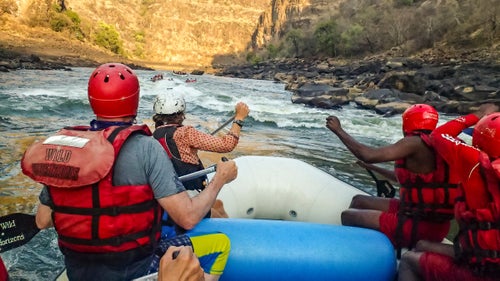
Big change may be coming to Africa’s fourth-largest river. While commercial outfitters have been running trips on the Zambezi since 1982, the river may soon be impassable, as the governments of Zambia and Zimbabwe continue to discuss a proposed dam construction below Victoria Falls. To get ahead of the $3 billion project, British Columbia–based outfitter ROAM (Rivers, Oceans, and Mountains) is offering rafting adventures through the Batoka Gorge, the area due to be dammed, allowing visitors to enjoy the Zambezi while it’s still wild.
Last October, I joined Brian McCutcheon and raft guide “Hippo” Moses Ngoma to see the river firsthand. Our expedition warmed up with a two-day “ducky” canoe float down some easier rapids above Victoria Falls, one of the seven wonders of the natural world. This was followed by three days of real-deal rafting over 34 miles and through 30 large rapids, including Class V passages with names like the Gnashing Jaws of Death, Oblivion, and Open Season.

The first day on the gorge consists of 25 rapids, ranging from Class III to Class V.

A portage on Batoka Gorge, showing Rapid 9, also known as Commercial Suicide.
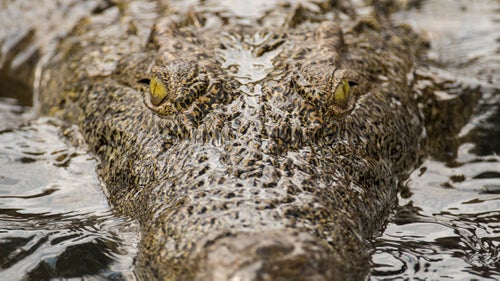
Nile Crocodile, Zambezi River.
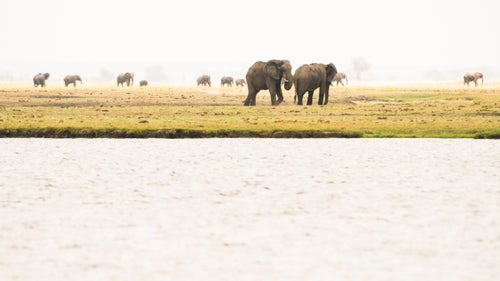
Elephants on the Chobe River, near the confluence with the Zambezi.
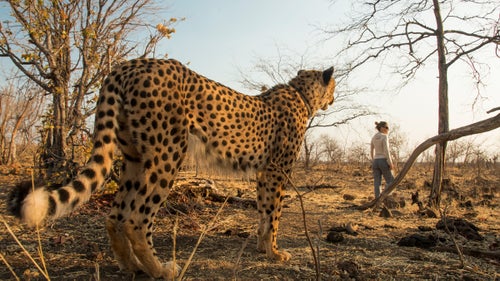
Sylvester, an orphaned cheetah, is used for educational talks with school groups. Travelers can walk with him on his morning hike through Elephant Camp, near Victoria Falls.
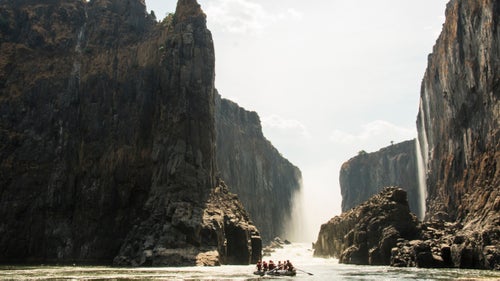
The Zambezi’s natural flow fluctuates a great deal. During the dry season (North America’s summer), Victoria Falls appears as a long escarpment of veil-like cascades, while in the rainy season, the entire canyon is a tumultuous and thundering chaos. The proposed Batoka Dam, 34 miles downstream, would create a reservoir that would lap at the bottom of Victoria Falls, possibly reducing its height. Our raft trip began just below the falls, after a 20-minute descent on foot.
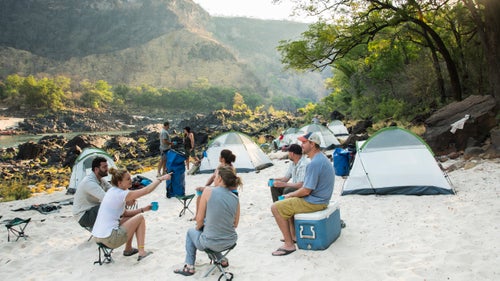
Massive fluctuations in river levels often push white sands high above the riverbank, as seen at the first camp, near Rapid 21. There, the group recounted a big day on the river—for some, it was their first whitewater experience.
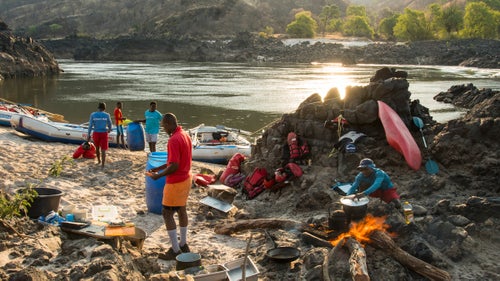
On the second night, an 11-man local crew helped our group of 20 with gear and supplies to set up one of the best campsites of the trip. It featured a croc-free riffle, which served as a natural hot tub for us tired paddlers. In the evening, we enjoyed a sing-along, led by our main guide, Hippo. The songs were basically local nursery rhymes, but they were easy to learn, and the group loved it.
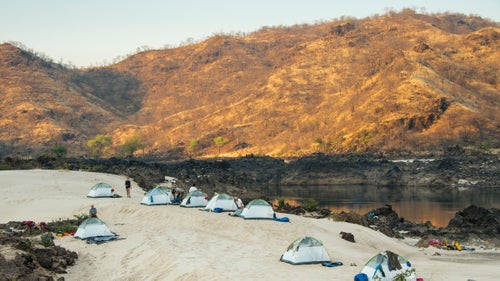
Second camp, Zambezi River, Zimbabwe. Although ROAM’s trips run as self-supported, leave-no-trace adventures, the camping is extremely comfortable—and include as many gin and tonics as you need to work off the pain of that day’s rafting.